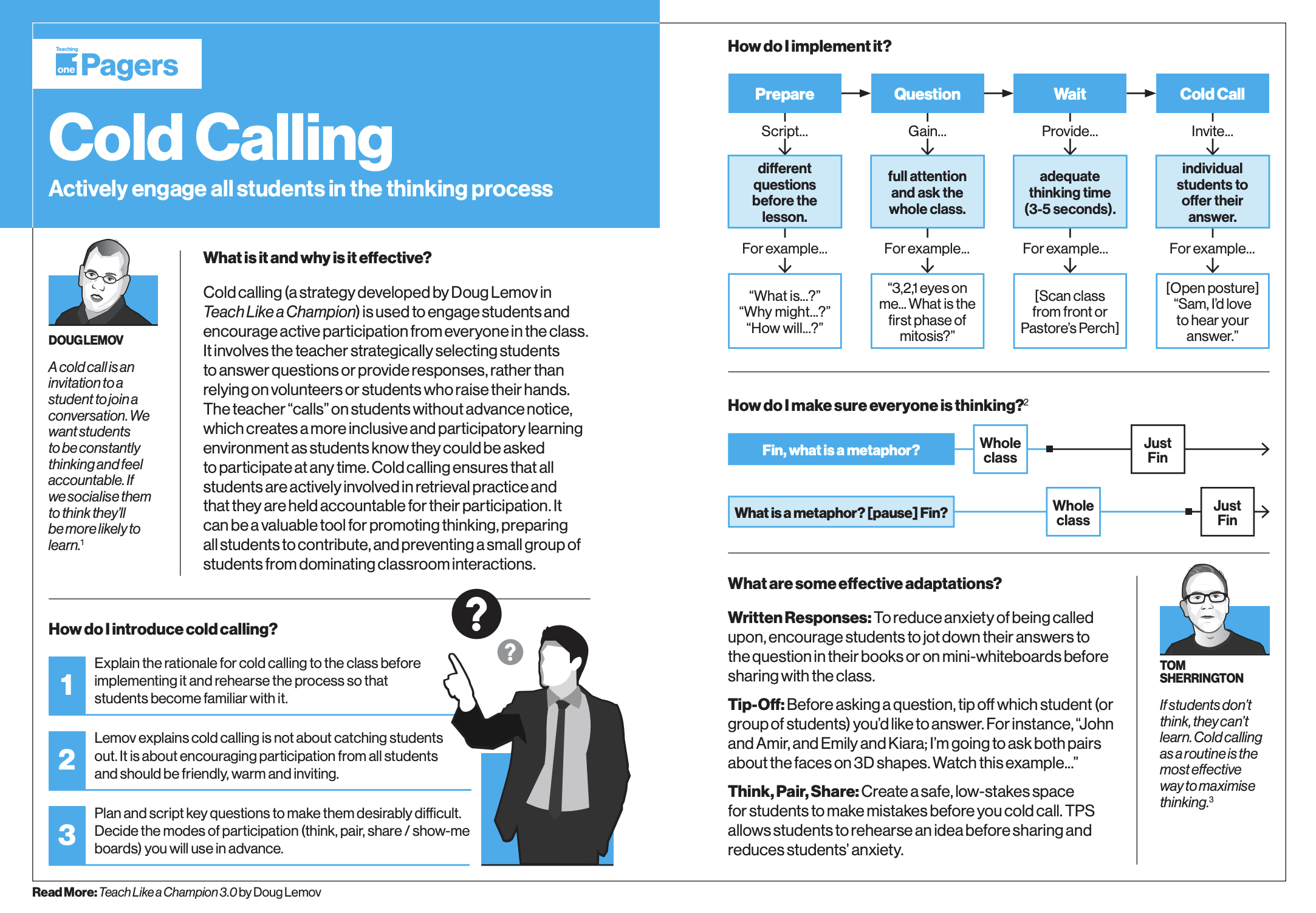Jamie Clark's 'Teaching One-Pagers'
A most encouraging trend in recent years in the educational world has been the publication of increasing numbers of books that translate educational research for teachers. It seems that we are increasingly short of time, but those of us trying to improve our practice can at last benefit from clearly-written and well-designed books that eschew jargon and go straight to the heart of classroom practice. For example, look at the Teaching Walkthrus series from Tom Sherrington and Oliver Caviglioli, and the work of the Learning Scientists. None of this existed when I was training to be a teacher, but it would have been wonderfully helpful if it had.
Another ‘translator’ who produces work of admirable clarity is Australia-based Jamie Clark. He has a gift for presenting educational ideas in succinct and yet still accurate and comprehensive ways. Check out his website for lots of examples: for instance, you can download posters for your own staff-room or classroom on Cold Calling, the work of Daniel Willingham, formative assessment, memory and more.
Earlier this year Clark’s book Teaching One-Pagers: evidence-informed summaries for busy educational professionals came out, and I can certainly recommend it to teachers who are starting their professional life, and also those who are not familiar with the application of cognitive science. It would be an excellent option also for a teacher-training course (many of those could do with much better resources).
There are three main ‘collections’ of ideas - Learning and Memory / Expert Teaching Principles / Classroom Culture. Within these, each topic is dealt with in a double-page layout, into which Clark somehow crams a lot of information (but ‘crams’ is actually wrong: the information is skilfully organised, and there is no sense of overload). Just one example: ‘Think, Pair, Share’ starts with a box on its effectiveness, suggests how it might be implemented, how it can be responsive and inclusive, and then lays out the possible flow of the technique in a clear chart.
Recommended for your teaching and learning library.
By Jamie Clark : Creative Commons Attribution-Non Commercial-Share Alike 4.0 International License. All Rights Reserved 2024.
